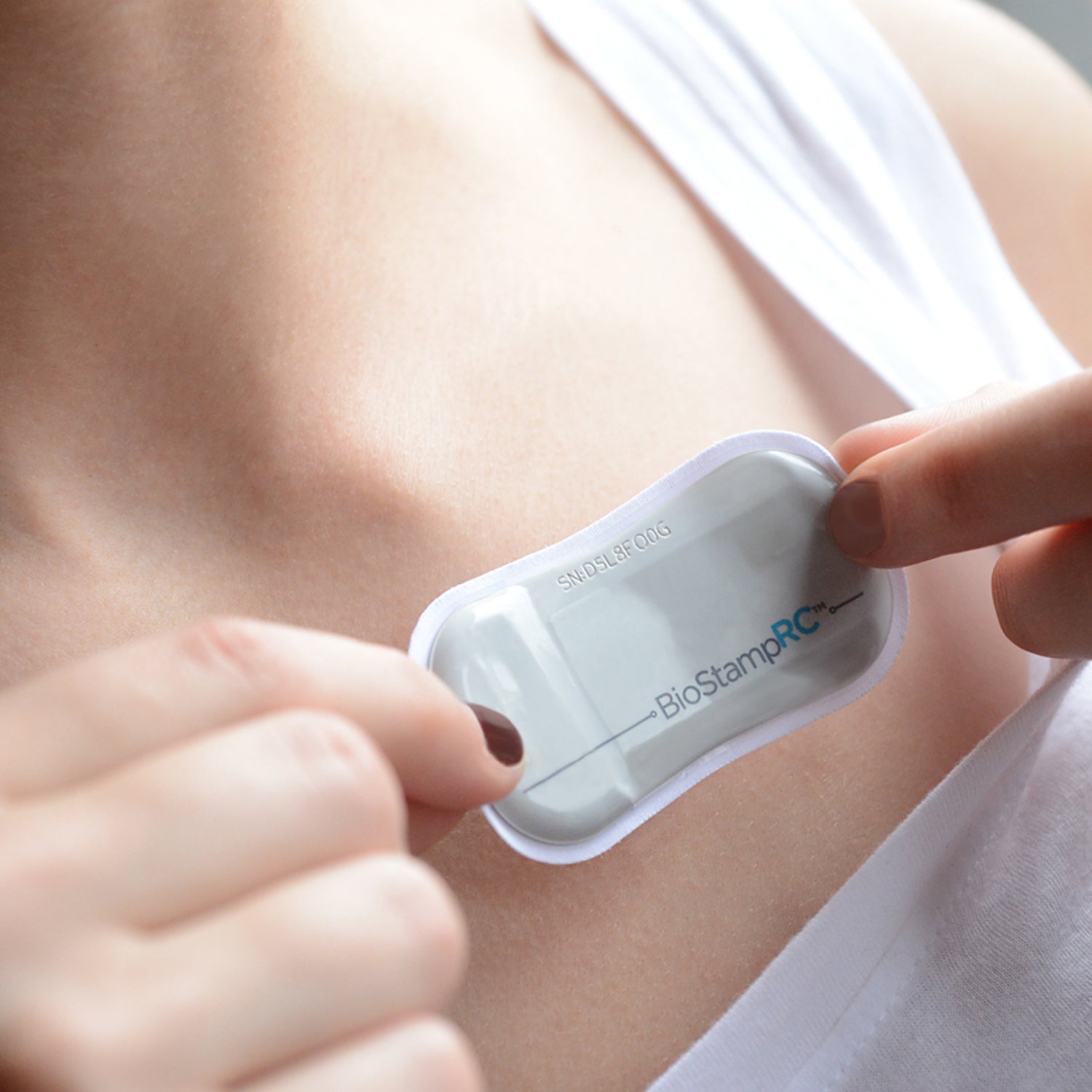The great enemy of activity trackers is accuracy. If your wristband isn’t tight enough and the sensor separates from your skin, the device can’t monitor heart rate. The more it shakes and rattles, the more likely it is to misread your movements. In an effort to fix this issue, researchers are developing flexible wearables that stick directly to skin.
And they’re not going to stop there.
Massachusetts company MC10 made headlines last month with its announcement of the . Weighing just 5.7 grams, it looks like a thick, high-tech Band-Aid, but it’s packed with accelerometers, a gyroscope, and sensors to monitor a wearer’s muscles and heart. It also has a Bluetooth radio and a tiny 15mAh battery that should keep it running for up to 36 hours.
The BioStamp Research Connect will go on sale later this year, but don’t get too excited just yet. This thing isn’t trying to be a “Fitbit killer”—at least not yet. As the name suggests, the BioStamp will be primarily aimed at researchers, to be used in medical studies where accurate monitoring of vitals is critical. This could lead to better exercise and performance data, if everything works as planned.
Eventually, though, we’ll see these flexible stickers become more like the activity trackers we know and (pretend to) love, and that may not be such a bad thing. I would prefer to wear a super-accurate, thin, flexible tracker on my upper back where I can completely forget about it than have a plastic bangle, with questionable looks and comfort, around my wrist.
What’s really wild, though, is that scientists are trying to get even closer to you skin than that. The same research group behind MC10 has been trying to make sensors that can be printed directly onto a wearer. Yes, it’s basically an electronic tattoo, and the researchers have made real progress toward that goal. These probably wouldn’t work with Bluetooth, but they might work with a different radio technology called near-field communication (NFC). Rather than broadcasting to your phone several feet away, you could just tap your phone to your wrist once or twice a day to transfer data. Hypothetically.
The biggest limitation here, currently, is power. We can’t yet print a chemical-based battery onto living human skin. There may be ways around that challenge, though.
Piezoelectrics are the common name for a material that can generate an electric charge when manipulated (usually squeezed or pushed). If these sensors were tucked into an area that moves a lot—perhaps the back of your knee—it’s possible that moderate activity could keep enough energy running through it to monitor your vitals. Then again, it might lose power every time you took a nap.
Perhaps a better technology would be thermoelectrics, which generate electricity from heat. Now, 98.6 degrees Fahrenheit certainly isn’t a roaring fire, but your body is exothermic nonetheless, and perhaps the right material could tap into this energy source.
We’ve strayed a bit into science fiction now, but these are technologies that exist today, in one form or another. And if there’s a will to create an activity-tracking tattoo, one day soon there will be a way.


